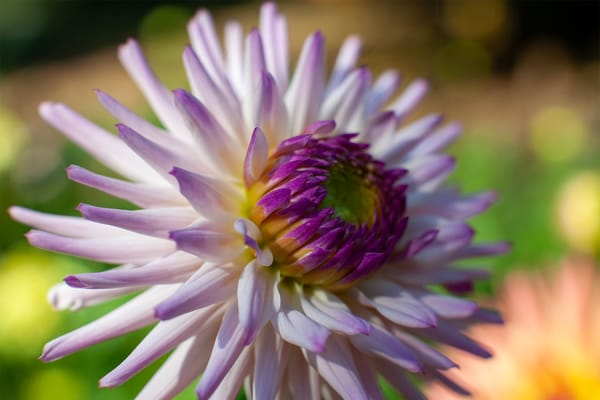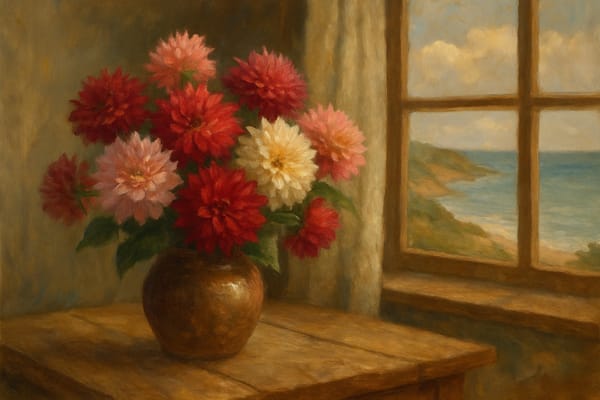Heritage dahlias are more than beautiful flowers — they are living chapters of horticultural history. These classic varieties, some over a century old, represent the artistry of early breeders and the enduring charm of time-tested forms. In Cornwall, with its deep-rooted dahlia tradition, heritage cultivars hold a special place, blending vibrant garden performance with a tangible link to the past.
What Makes a Dahlia a Heritage Variety?
Heritage dahlias are generally defined as cultivars introduced over 50 years ago, often before the explosion of modern hybrid breeding. They have remained in cultivation thanks to their outstanding vigor, distinct forms, and sometimes fascinating origin stories.
These dahlias are frequently tied to specific regions, historic gardens, or renowned breeders. In Cornwall, names like Polventon Supreme and Gurtla Twilight echo both place and legacy — each variety a botanical heirloom passed through generations of gardeners.
Classic Heritage Varieties Still Beloved Today
| Variety | Year | Flower Type | Notable Traits |
|---|
| Bishop of Llandaff | 1927 | Single/Collarette | Ruby-red blooms, dark foliage, pollinator-friendly |
| Thomas A. Edison | 1929 | Decorative | Rich purple, exhibition favorite |
| Kelvin Floodlight | c. 1965 | Dinnerplate | Giant yellow blooms, robust growth |
| Arabian Night | pre-1950 | Decorative | Deep velvety red, garden classic |
| David Howard | 1960s | Decorative | Orange flowers, dark bronze foliage |
| Mary Eveline | 1940s | Cactus | Pale pink, traditional favorite |
| Polventon Supreme | mid-1900s | Ball | Reliable yellow, showbench success |
| Gurtla Twilight | 1990s | Pompon | Cornish-bred, deep purple, award-winning |
Why Grow Heritage Dahlias?
- Resilience in the Garden — Heritage varieties often outperform modern hybrids in variable UK climates, offering strong growth and consistent flowering.
- Pollinator Friendly — Singles and collarettes provide accessible nectar and pollen, adding ecological value.
- Cultural Connection — Growing heritage dahlias supports biodiversity and preserves local horticultural stories, especially meaningful in Cornwall’s rich garden heritage.
- Exhibition & Cutting — Many classics remain top choices for both show growers and floral designers seeking reliable stems and standout blooms.
How to Source Heritage Dahlias in Cornwall & Beyond
- Specialist Nurseries — Look for UK suppliers with heirloom ranges; order early as demand is high.
- The National Dahlia Collection at Kehelland Trust — Visit during open days to see, buy, or even volunteer.
- Dahlia Societies & Shows — Connect with local groups for swaps, sales, and expert advice.
- Heritage Gardens & Fairs — Events like plant heritage fairs offer rare finds and historical varieties.
- Online Collector Groups — Trusted networks often share or swap hard-to-find tubers.
Growing Heritage Dahlias with Confidence
To get the best from these time-honored cultivars:
- Prepare rich, well-drained soil and mulch generously.
- Stake taller types early and deadhead regularly for prolonged flowering.
- Divide every few years to maintain vigor.
- Overwinter tubers with care — either lifted or mulched in-situ.
Cornwall’s Role in the Heritage Dahlia Story
Cornwall has long been a stronghold for dahlia breeding and preservation. Local introductions, the efforts of breeders like Harold Wilkinson (Gurtla Twilight), and institutions like the National Dahlia Collection make the region a living archive of dahlia heritage. Every Cornish garden that plants these varieties helps keep this legacy alive.
In Summary:
Planting heritage dahlias invites enduring beauty, history, and resilience into your garden — a way of tending not just flowers, but living stories. Whether you grow them for show, cutting, pollinators, or sheer love of tradition, these time-honored dahlias offer a connection to past gardeners and future blooms.
Tools











